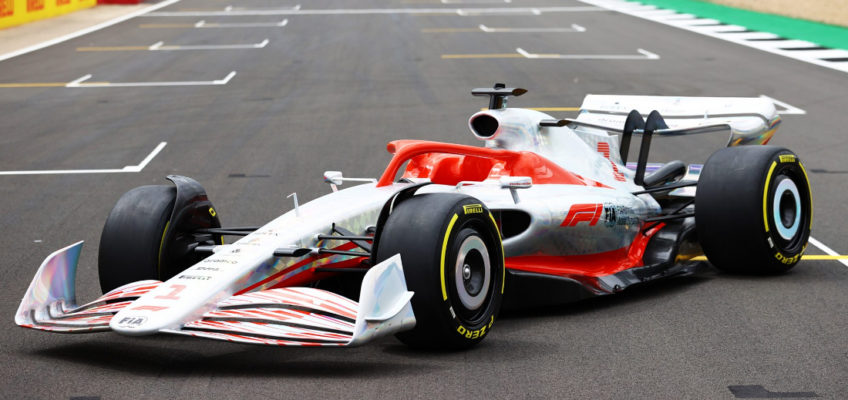The new era of the Continental Circus with 2022 F1 cars is finally to commence this year after being postponed in 2021 as a result of the coronavirus pandemic. The sport is set to undergo a true revolution this season which is based on a set of new technical regulations. Most of the measures, which largely concern the design of the cars themselves, are aimed at providing a better show as well as improving the conditions for fighting on the track.
The difficulty for racing cars to get anywhere near their rival ahead drastically reduced the number of battles on the track. Racing vehicles have been very sensitive to the ‘dirty air’ coming off the car in front, which caused dynamic instability for the chaser in the form of downforce loss.
In order to achieve a lower emission and impact of these ‘dirty air’ wakes, the role of the front wing, and to a lesser extent the rear wing, as a generator of downforce has been reduced. Thanks to a simpler design, these have been made less sensitive to air flows. The numerous winglets that populated their surface have now been removed, which should also help reduce the turbulent aerodynamic wake and increase the stability of the cars when rolling close together.
The ground effect for the 2022 F1 cars
The role traditionally played by the front wing will now be taken on by the lower part of the vehicle, which together with a large diffuser will be responsible for generating ground effect. Popular in the 70s and 80s thanks to geniuses like Colin Chapman, this aerodynamic phenomenon causes a great amount of downforce thanks to the difference in pressure between the top and bottom of the vehicle, with cars being pushed into the track, or, put another way, it makes the car act like an inverted aeroplane wing.
The global architecture of the new racing cars is now simpler and less ornate. The barge boards on the sides of the single-seaters, which had evolved into baroque design exercises, as well as the countless winglets which populated the bodies, have disappeared.
Less downforce loss, more duels on the track
According to F1’s own research, single-seaters used to lose around 35% of their downforce when racing 20 meters behind another car. That figure shot up to 46% when the distance between two cars decreased to 10 meters.
Simulations for current-season F1 models, however, demonstrate a substantial improvement in that respect. It seems that the 2022 models are only going to lose 4% of their downforce when approaching another car at 20 meters, and 18% while at 10 meters.
If these predictions are correct, races are expected to become a lot more competitive. At the same time, circuits where fast corners prevent any overtaking at all, as is the case with Barcelona, will no longer have that problem, and theirs won’t be considered ‘boring’ GPs anymore.
The tyres
Another substantial change pertains to the tyres, which are growing from thirteen to eighteen inches. In addition to being more attractive, if we ignore the horrendous new caps that is, their size will bring them more in line with road vehicles. Besides these, the main motivation behind that change in design has been that of preventing overheating, a typical issue when trying to catch a rival car up.
On the other hand, the enlarged wheels have forced the redesign of the suspensions’ architecture. It remains to be seen what adaptations teams have made in this regard, and what is their impact on performance. Precisely, and largely due to their new ‘shoes’, the minimum weight of racing cars is increasing by about 40 kg to 790 kg.
Images of 2022 F1 cars:





Leave a Reply